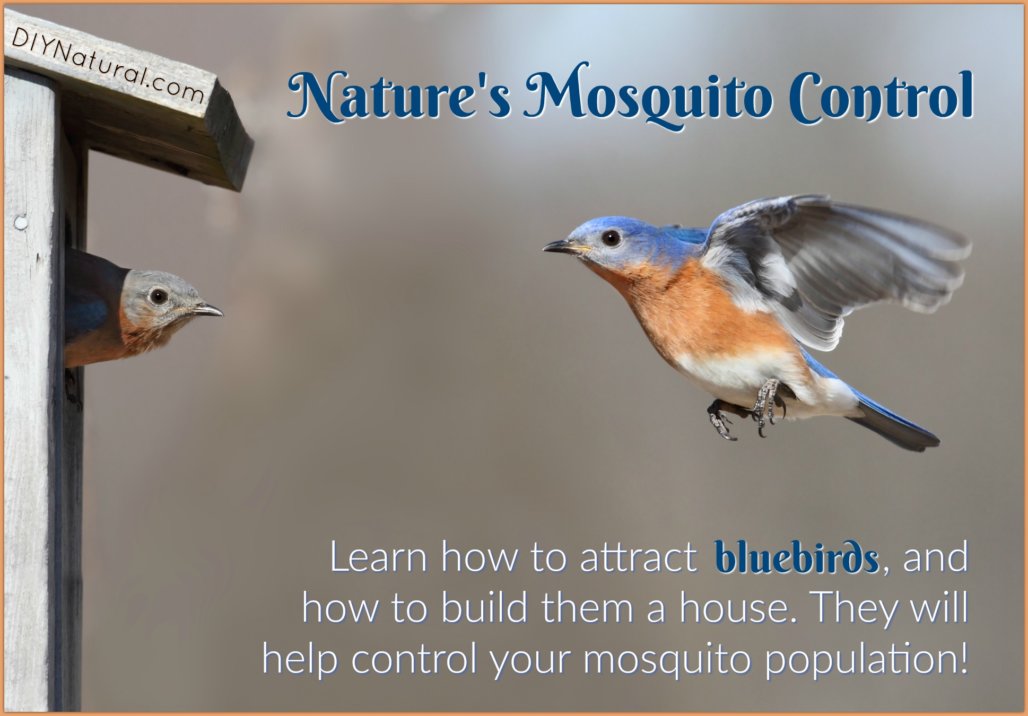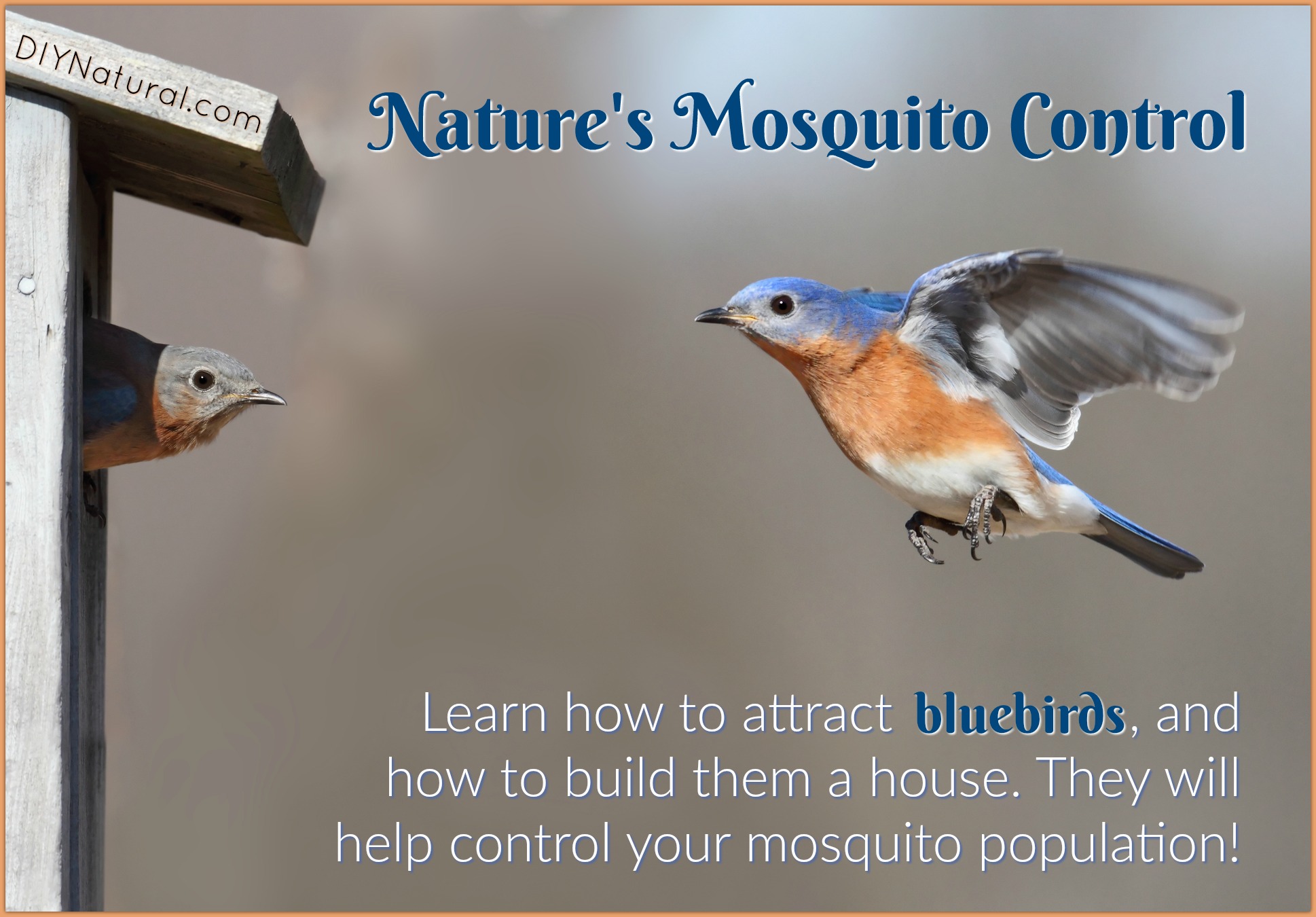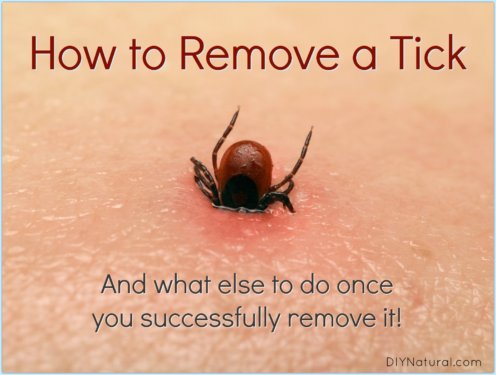
Learn how to attract bluebirds because they’re beautiful, have a sweet song, and eat mosquitoes and insects! More bluebirds, fewer mosquitoes.
As a kid, I grew up with both of my grandmothers feeding the birds to attract them to the yard. We’d sit for hours, but I noticed that the bluebirds never came to the feeder. That’s when I found out that they rarely ate seeds, but instead preferred insects. When I found out they ate mosquitoes, I got really excited.
Tip: try making our homemade DIY mosquito repellent!
How to Attract Bluebirds to Control Mosquitoes and Other Bugs
Why learn how to attract bluebirds?
Why would you want to learn how to attract bluebirds? Well, as mentioned above, bluebirds are bug eaters and eat up to 2,000 bugs per day! Often catching them on the fly, a few bluebirds can keep the mosquito population around your home to a minimum.
What else do bluebirds eat?
Bluebirds will also eat mealworms, which you can buy freeze-dried at many places that sell bird seed and online here. Live mealworms can also be used, and are available for purchase at pet shops, or online here. You can also grow your own if you have the space to do it.
Bluebirds will also eat some fruits and seeds, primarily sunflower and suet-type feed. They prefer native dogwood berries and mulberries and will even eat scrambled eggs in a pinch. And they prefer running water, such as a small stream or fountain. If you do put out berries or eggs, keep an eye on them and remove them after a few hours so you don’t attract raccoons or bears. They love these treats too!
Housing Bluebirds
In my area, Western North Carolina, we’re told to put our bluebird houses out by the end of February. I keep mine up all year for convenience. Surprisingly, the bluebirds have already been exploring the houses since mid-January. A pair of bluebirds often check out houses early in order to see which one suits their needs. And they will very often return to the same nest box year after year. Bluebirds stay here year-round, whereas, in the northern part of the country, they head south for a few months. However, it’s not long and they’ll return again.
How to Make a Bluebird House
Bluebird houses can be found in many places, including online here. You can also make your own easily.
Supplies
- 1″x6″ board
- hinge
- saw
Process
Cut the board so that you have two sides that are 9-inches long, slanted, and a 9-inch back and a 6-inch front. Cut a 4-inch floor and a 6-inch roof. It helps to have a hinge on the roof to be able to get in and clean it, which you can do as soon as the babies have left the nest.
Cut a round hole, 1½-inches across, for the birds to get in. This needs to be about 2½-inches from the top.
Do not make a perch! This will encourage predator species to take up residence. And don’t paint the house. Bluebirds prefer not to have any color. (Possibly to keep their young safe?)
Mounting the Bird House
When mounting your bluebird house, keep it about 6-feet high and aim it towards the nearest tree. You can have more than one house but keep them 75-100 feet apart. You can mount them on a post or directly on a tree. I have one on a post about mid-yard and another that I mounted in a tree using zip ties. This allows me to remove it at the end of the year, or at least inspect it to see if it needs to be adjusted as the tree grows.
With the one on the tree, I haven’t had a problem with snakes, but the one on the post will see them occasionally. You can solve this problem by planting a rosebush underneath and twining the branches around the post. Keep it trimmed so it doesn’t interfere with the birds. I just take the branch and bend it down and around again.
Other Considerations
Water, as stated before, is essential for attracting bluebirds. A birdbath, small pond, or even a large shallow bowl will work. I have an area in the back that I use for a potting area and I have a few buckets with water in them that the birds love to perch on and drink from. I use Mosquito Bits in them, which contains natural bacteria that destroy the larvae. I’m constantly dipping in the water during the summer, and this helps keep mosquitoes out of it too.
Cats and other animals can be a problem for bluebirds. On my feeding post, I have a baffle that keeps the cats from climbing it. Raccoons will sometimes try to climb the post but have had no luck so far. Predator birds, like hawks and owls, sometimes come around, but they don’t seem to be as much of a problem. Keeping the hole size small will keep starlings and other birds from trying to nest in the house.
Attracting bluebirds to your yard can help keep bugs at bay and provide you with a yard you can enjoy.
Note: You may also want to check out the article we have on attracting other beneficial birds and wildlife.
Aren’t you glad you now know how to attract bluebirds to your yard and garden?!
*******




Loved reading this. both my husband and I enjoyed it so much that we’re making our first bluebird house together this weekend! Thanks so much. I’m looking forward to learning a lot from you, Debra, about how to truly enjoy the true beauty in life.